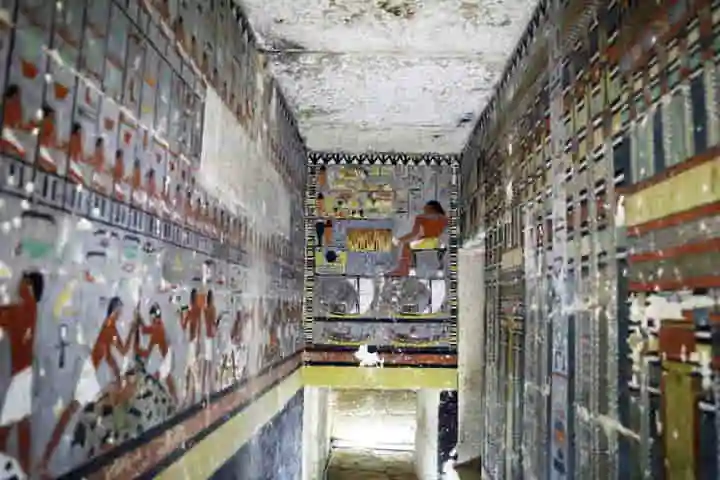The discovery and study of this one mummy is all set to rewrite the history of ancient Egypt. What essentially this evidence does is point at the ability of ancient Egyptians to conduct an advanced mummification process 1,000 years earlier than what was thought.
According to an article in theguardian.com, the 2019 discovery of the preserved body – of a high-ranking nobleman called Khuwy – has been detected to be much older that what was assumed. It turns out to be one of the oldest discovered mummies of Egypt.
New #archaeological discovery in #Saqqara, #Egypt: An exceptionally painted tomb of a fifth Dynasty dignitary named #Khuwy pic.twitter.com/wI34aXQS3J
— Ministry of Tourism and Antiquities (@TourismandAntiq) April 14, 2019
Dated nearly 4,000 years ago and belonging to the Old Kingdom, its preservation methodology reflects advancement in terms of knowledge and practice.
The examination of the body revealed the use of trailblazing methods and materials and this encompassed fine linen dressing of exceptional quality and resin of high quality, which were not considered to have been achieved until 1,000 years later.
Talking to the Observer, Professor Salima Ikram who heads Egyptology at the American University in Cairo said: “If this is indeed an Old Kingdom mummy, all books about mummification and the history of the Old Kingdom will need to be revised. This would completely turn our understanding of the evolution of mummification on its head. The materials used, their origins, and the trade routes associated with them will dramatically impact our understanding of Old Kingdom Egypt.”
Sharing more details on mummification in the Old Kingdom period, Ikram added: “Until now, we had thought that Old Kingdom mummification was relatively simple, with basic desiccation – not always successful – no removal of the brain, and only occasional removal of the internal organs. Indeed, more attention was paid to the exterior appearance of the deceased than the interior. Also, the use of resins is far more limited in the Old Kingdom mummies thus far recorded. This mummy is awash with resins and textiles and gives a completely different impression of mummification. In fact, it is more like mummies found 1,000 years later.”
The discovery of this mummy will feature in “Lost Treasures of Egypt”, National Geographic’s documentary series, that will be beamed from November 7 onwards. The series will follow the team of international archaeologists and experts as they take part in the excavation. Audience will be told about the process of mummification in the episode titled “Rise of the Mummies” which will be broadcast on November 28.
Also read: 3,500 year old ancient Babylonian tablet describes ghosts and the way to purge them
Besides Ikram this episode will also feature her fellow archaeologist Dr Mohamed Megahed. The latter speaking about this latest find said: “If it’s really Khuwy, this is a breakthrough in Ancient Egyptian history.”
NG had filmed the discovery of the mummy in a lavish tomb located in the necropolis at Saqqara earlier. The latest series will focus on the dating and analysis of the find. Through hieroglyphs it was found that the said body was that of Khuwy, who lived 4,000 years ago and was a related to the royal family.
The producer of the series for Windfall Films who have made this series, Tom Cook speaking about the discovery averred: “They knew the pottery in the tomb was Old Kingdom but [Ikram] didn’t think that the mummy was from [that period] because it was preserved too well. They didn’t think the mummification process [then] was that advanced. So her initial reaction was: this is definitely not Old Kingdom. But over the course of the investigation she started to come round [to the idea].”
Also read: 3,500 year old ancient Babylonian tablet describes ghosts and the way to purge them
The body which was to be protected was bathed in expensive resins obtained from tree saps by the ancient embalmers to preserve its flesh. Following this the body was wrapped. This particular mummy showed use of resins of high quality and also bandages which were of highest grade.
In the show, Ikram observed: “It’s extraordinary. The only time I’ve [seen] so much of this kind of good quality linen has been in the 21st dynasty.” Incidentally, the Egyptian Pharaohs of the 21st dynasty ruled more than 1,000 years after Khuwy lived.
The latest find is summed up very aptly by the documentary as it states: “With every new body archaeologists unearth, the story of the mummies of Egypt becomes clearer.”




















